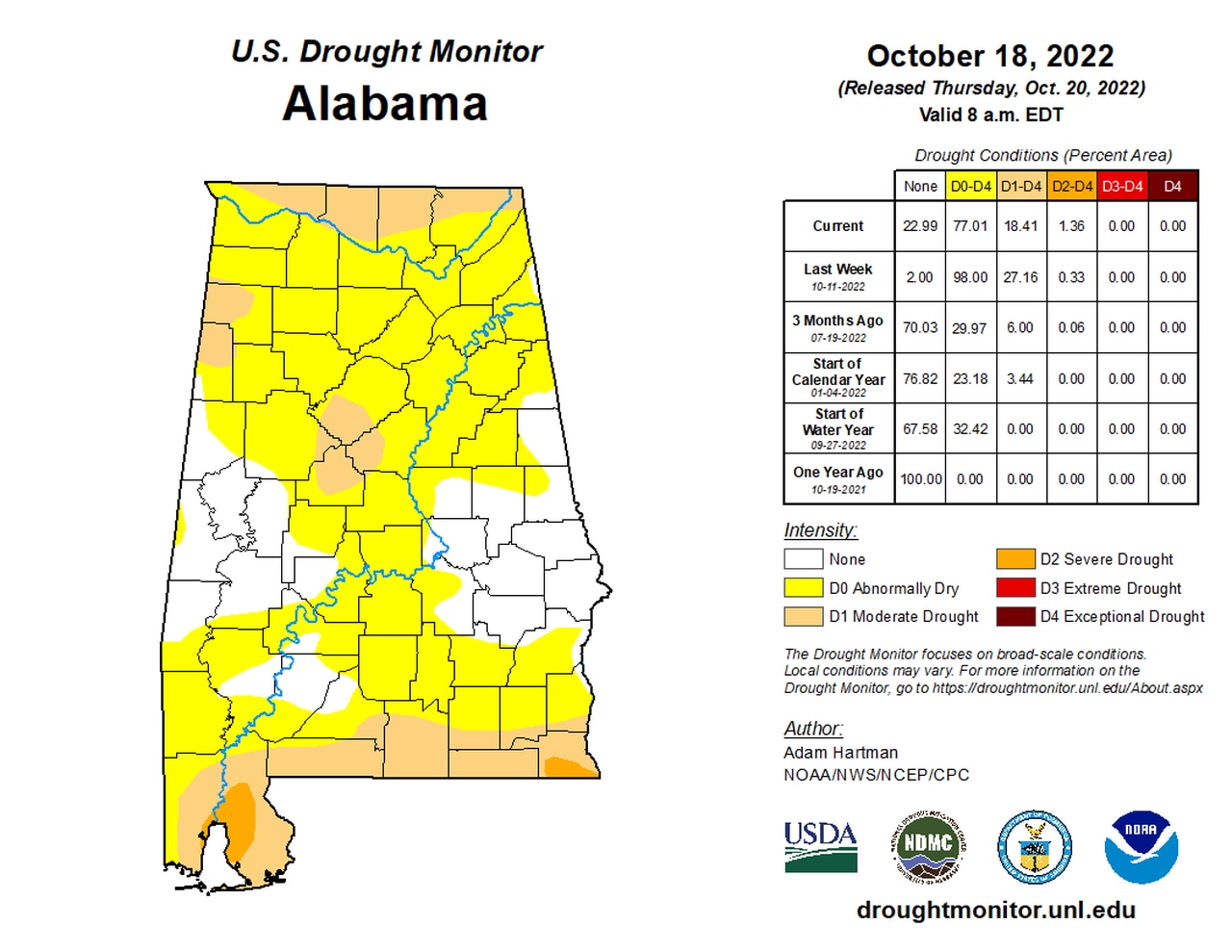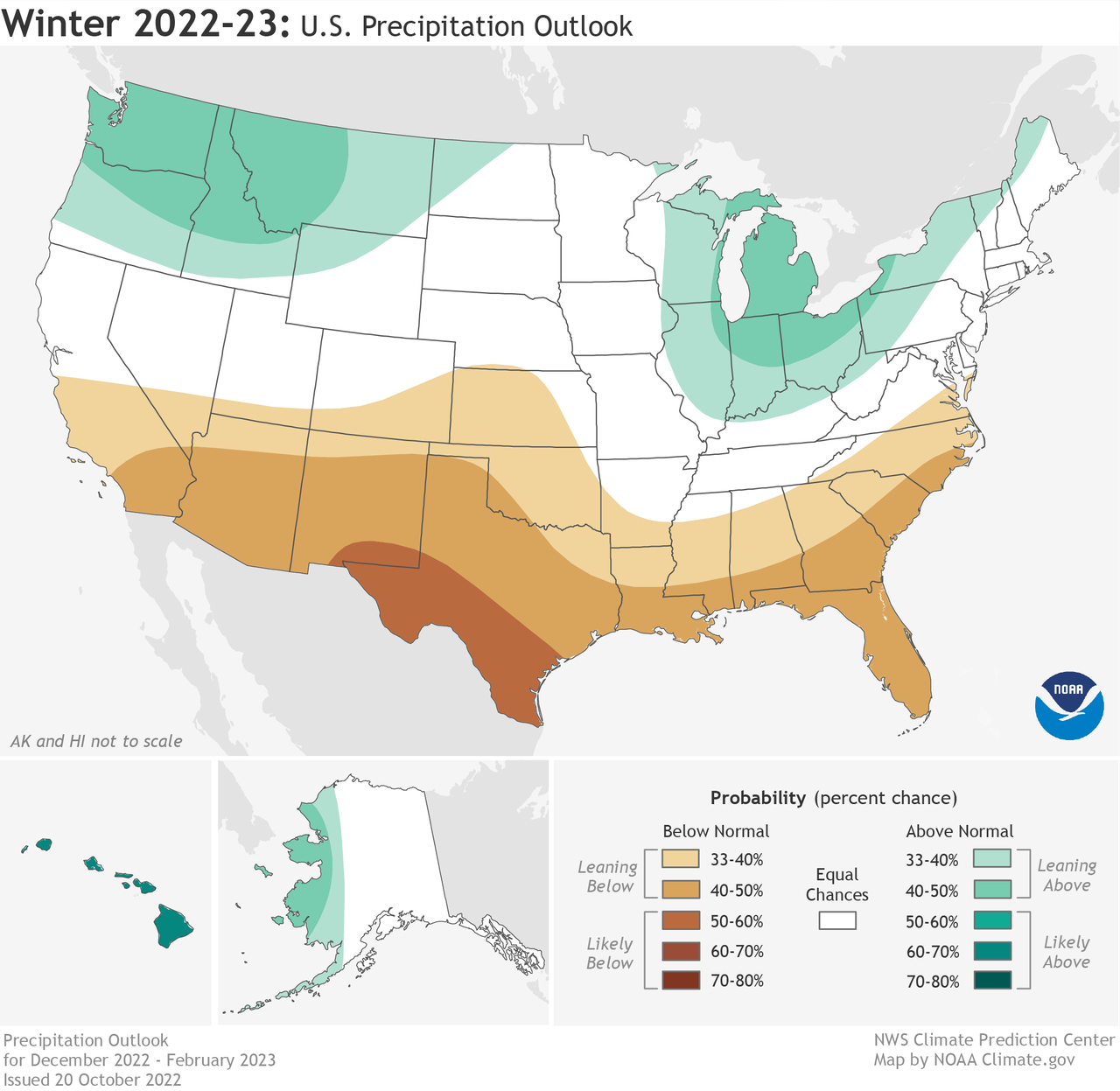NOAA winter outlook 2022-2023: Will snow fall on Alabama
Snow lovers might not be fans of NOAA’s forecast for the winter months.
NOAA’s Climate Prediction Center released its winter outlook on Thursday, and it is betting on La Nina conditions continuing to influence Alabama’s weather patterns for the third straight year.
The winter outlook covers meteorological winter, or the months of December, January and February.
The Climate Prediction Center suggests there will be an increased probability of above-average temperatures and below-average rainfall for most of Alabama — and a large part of the southern U.S. as well.
As for the U.S. as a whole, NOAA is forecasting drier-than-average conditions across the South with wetter-than-average conditions for parts of the Ohio Valley, Great Lakes, northern Rockies and Pacific Northwest.
La Nina is a climate phenomenon which is signaled by below-average sea surface temperatures in the Pacific Ocean. Those cooler waters can influence weather patterns worldwide.
Although no La Nina is the same, La Ninas typically bring drier and warmer weather to Alabama over the winter months.
The latest winter outlook shows a good probability that most of Alabama will see warmer-than-average temperatures, with slightly higher probabilities for the southern part of the state and equal chances of above- or below-average temperatures for north Alabama. (See the map at the top of this post.)
That’s above average temperatures for the winter months, mind you. No need to pull the flip-flops back out just yet.
The precipitation outlook shows an increased probability of below-average precipitation for most of Alabama. However, south Alabama has a slightly higher chance of seeing drier conditions, and north Alabama has an equal chance of above- or below-average precipitation.
Drier-than-average conditions are likely across much of Alabama over the winter months.
That includes snow. The winter outlook doesn’t mean that Alabama will have zero chances for snow over the winter months, however.
NOAA said its seasonal outlooks do not project seasonal snowfall accumulations because snow forecasts are generally not predictable more than a week in advance.
But below-average precipitation won’t help in the drought department. Drought conditions have persisted — and worsened — across parts of the state this week despite last week’s beneficial rainfall.
The latest U.S. Drought Monitor report, released Thursday, shows that a good part of the state is still drier than it should be, and parts of south Alabama are in severe drought. (It also should be noted that October is typically one of Alabama’s driest months.)

Much of Alabama is drier than is should be according to the latest U.S. Drought Monitor report.
Some things to look for this fall and winter:
* The time changes Nov. 6.
* The Atlantic hurricane season ends on Nov. 30.
* Meteorological winter begins Dec. 1.
* Astronomical winter begins Dec. 21.
* Meteorological spring begins March 1, 2023.
* Daylight-saving time begins March 12, 2023.
* Astronomical spring begins March 20, 2023.
The Climate Prediction Center will update its three-month outlook each month. The next update will be available Nov. 17.
